Kingsgrove Branch:
Schnap Electric Products Blog
Schnap Electric Products Blog Posts
Ear Protection

G'day! On any worksite across Australia, noise is a constant companion. Whether it is the high-pitched scream of an angle grinder, the roar of a generator, or the constant hammering of a framing gun, the volume levels can get dangerous very quickly. While we are often quick to put on safety glasses or steel-capped boots, ear protection is sometimes overlooked until the ringing in your ears doesn't stop.
Noise-Induced Hearing Loss (NIHL) is a major issue for Australian tradespeople. It is permanent, irreversible, and entirely preventable. Choosing the right protective gear isn't just about following the rules; it is about making sure you can still hear the footy or your grandkids talking when you get older.
Understanding the Risks
The damage caused by loud noise is cumulative. You might not notice it after one day, but years of exposure to sounds over 85 decibels (dB) will wear down the delicate hair cells in your inner ear. Once these are damaged, they do not grow back.
This is why having reliable ear protection in your kit is non-negotiable. Whether you are cutting conduit, drilling into concrete, or working near heavy machinery, you need a barrier between the noise and your eardrums.
Plugs vs Muffs: Which is Better?
When selecting gear, you generally have two main options: earplugs or earmuffs. Both have their place depending on the job and the environment.
Earplugs These are inserted into the ear canal to block sound.
- Pros: They are lightweight, cheap, and compatible with other PPE like hard hats and safety glasses. They are also much cooler to wear during a scorching Aussie summer.
- Cons: They require clean hands to insert properly to avoid infection, which can be tricky on a dirty site.
Earmuffs These fit over the entire outer ear to form a seal against the head.
- Pros: They are easy to put on and take off quickly, making them ideal for intermittent noise. They are generally more durable and harder to lose.
- Cons: They can get hot and sweaty, and safety glasses can sometimes break the seal, reducing their effectiveness.
Making Sense of the Standards
In Australia, hearing protection is rated by classes according to the AS/NZS 1270 standard. When you visit your local electrical wholesaler or safety shop, you will see these classes marked on the packaging.
- Class 1 & 2: For low to moderate noise levels.
- Class 3 & 4: For high noise levels.
- Class 5: For extremely high noise levels (up to 110dB). This is the standard choice for most heavy industrial work.
It is crucial to pick the right class. Over-protection can be dangerous too, as it might stop you from hearing warning signals or colleagues shouting.
Comfort and Compliance
The best ear protection is the one you actually wear. If your muffs are too tight or your plugs are irritating, you are more likely to take them off, exposing yourself to damage. Look for gear with soft cushioning and adjustable headbands.
It is also worth noting that technology has come a long way. You can now get electronic earmuffs that block out loud impact noises while amplifying quiet sounds, allowing you to have a conversation without removing your protection.
Safety Solutions from Schnap Electric
When you are stocking up for the next job, you need a supplier that understands the full scope of trade requirements. Safety is just as important as the tools you use.
Schnap Electric Products is a leading supplier for the trade industry in Australia. While they are famous for their electrical components, they also stock a comprehensive range of site safety gear, including high-quality ear protection. Whether you need a bulk box of disposable plugs for the crew or a robust pair of Class 5 earmuffs for yourself, they have you covered. By providing the same professional-grade equipment you would expect to find at any major electrical wholesaler, Schnap Electric ensures you have everything you need to work safely and effectively. Protect your hearing today with quality gear from Schnap Electric.
Shooting Ear Protection
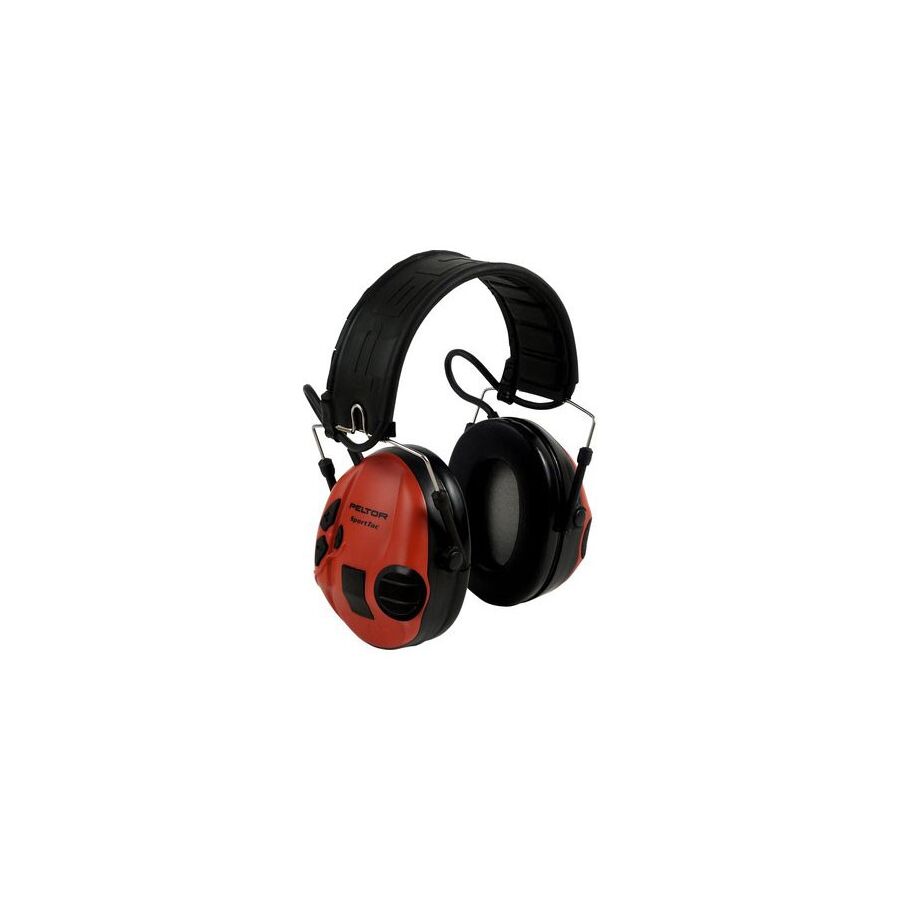
G'day! Whether you are a competitive shooter hitting the range every weekend, a farmer controlling pests in the paddock, or a hunter heading out bush, there is one piece of kit that is just as important as your firearm. We are talking about shooting ear protection. The crack of a rifle or the boom of a shotgun creates a noise impulse that is loud enough to cause instant, permanent hearing damage.
Once your hearing is gone, it does not come back. Tinnitus, that constant ringing in the ears, is a common complaint among old-school shooters who didn't take protection seriously. Today, the technology available means there is no excuse for not protecting your ears while maintaining situational awareness.
Understanding the Noise
Firearms are loud. A standard .22 rifle might produce around 140 decibels, while larger centrefire rifles and shotguns can easily exceed 160 decibels. To put that in perspective, permanent hearing damage can occur from a single exposure to sounds over 140 decibels.
This is why standard foam earplugs from the hardware store might not always cut it. You need specialized shooting ear protection designed to handle high-impact impulse noise. In Australia, look for products that comply with AS/NZS 1270 standards, ideally offering Class 5 protection for the highest level of noise reduction.
Passive vs Electronic Earmuffs
When choosing your gear, you generally have two main categories to choose from.
Passive Earmuffs These are the traditional style of muffs. They use foam and acoustic materials to block sound waves from entering the ear canal. They are reliable, generally affordable, and require no batteries. They act as a solid barrier against noise.
Electronic Earmuffs This is the game-changer for modern shooters. Electronic shooting ear protection features built-in microphones and speakers. They amplify low-level sounds, such as range commands, conversation, or the sound of game moving through the bush. However, the instant a shot is fired, the internal chip shuts off the amplification (or compresses the sound) to a safe level. This allows you to communicate with your mates and stay aware of your surroundings without taking your muffs off.
Quality Matters
Just as a professional tradesperson would visit a reputable electrical wholesaler to buy reliable safety equipment for a job site, a shooter should source their hearing protection from trusted brands. Cheap, uncertified muffs might look the part, but if the seal around your ear isn't tight or the materials are inferior, dangerous noise will leak through.
Comfort is also king. If your muffs squeeze your head too tight or interfere with the stock of your rifle, you are less likely to wear them properly. Look for low-profile cups if you are shooting long guns, and consider gel ear pads for all-day comfort.
Double Plugging for Maximum Safety
For indoor ranges or when using large-calibre firearms with muzzle brakes, many experienced shooters recommend "double plugging." This involves wearing high-quality foam earplugs underneath your electronic muffs. You can turn the volume up on the muffs to hear instructions through the plugs, but you get the combined Noise Reduction Rating (NRR) of both layers for maximum protection against the concussion of the shot.
Safety Gear form Schnap Electric
While you might know them for their trade supplies, having access to industrial-grade safety equipment is vital for anyone dealing with loud environments.
Schnap Electric Products is a leading supplier for the trade industry in Australia. They stock a comprehensive range of safety gear, including high-performance shooting ear protection and industrial earmuffs suitable for the range or the worksite. By stocking the same high-standard personal protective equipment you would expect to find at a major electrical wholesaler, Schnap Electric ensures your hearing is protected by the best gear on the market. For reliability and safety you can trust, check out the range at Schnap Electric.
Electrical Cable
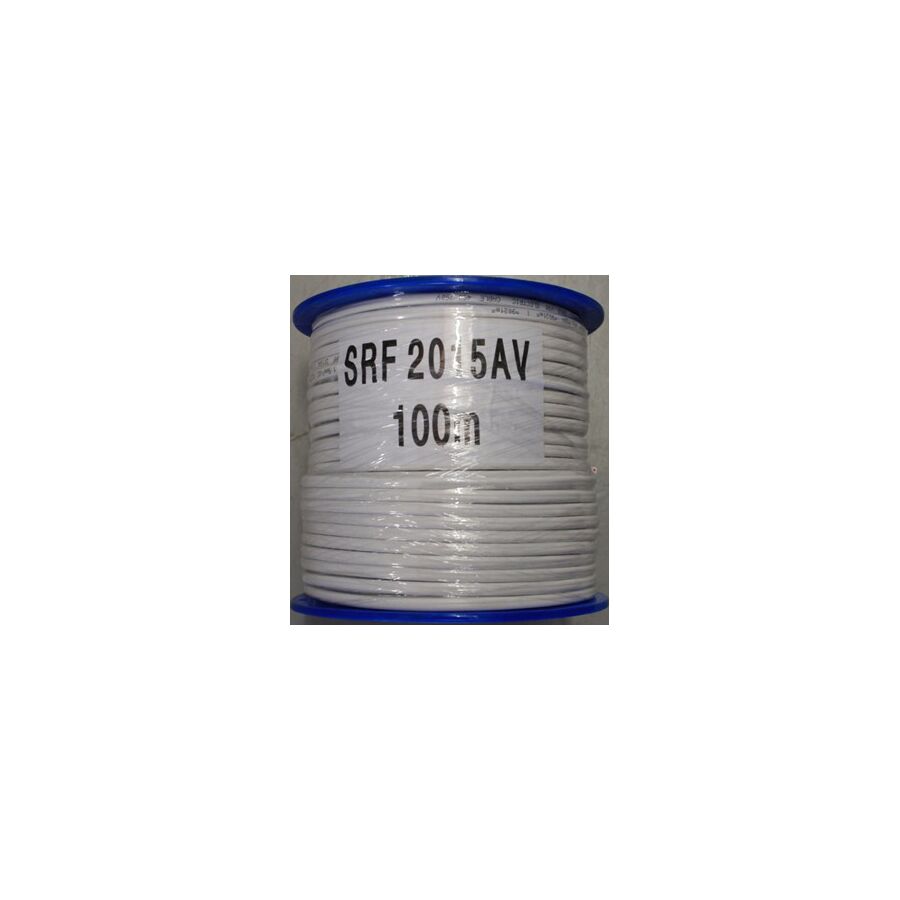
G'day! When you flip a light switch or plug in the kettle, you rarely think about what is happening behind the walls. However, the hidden network of copper that powers our lives is one of the most critical components of any building. Choosing the right electrical cable is not just about getting the lights on; it is about ensuring your home is safe, compliant, and capable of handling the power demands of modern Aussie life.
From the standard white cables in your bedroom walls to the heavy-duty orange cables running underground to the shed, understanding the difference between cable types is essential knowledge for anyone planning a renovation or build.
The Standard: Flat TPS Cable
If you look inside the roof cavity or wall of almost any Australian home, you will see kilometres of white, flat plastic cabling. This is known as Twin and Earth, or Flat TPS (Thermoplastic Sheathed) cable. It is the bread and butter of the industry.
TPS electrical cable consists of an outer sheath protecting individually insulated Active, Neutral, and Earth wires. It is easy to strip and flexible enough to be pulled through timber frames during the rough-in stage of a build. While it is durable, it is designed strictly for indoor use or enclosed spaces like conduits, as the white plastic can break down under UV light over time.
Heavy Duty: Orange Circular Cable
When the job gets tough, tradespeople switch to Orange Circular cable. You will often see this on construction sites, in industrial settings, or running power to outdoor equipment like pool pumps and air conditioning units.
This cable gets its name from the distinctive orange outer sheath, which is round rather than flat. It is built to withstand harder knocks and provides better mechanical protection than standard TPS. Crucially, high-quality orange circular cable found at a reputable electrical wholesaler is usually UV stabilised, meaning it can be run on external walls without degrading in the harsh Australian sun.
Size Matters: Matching Cable to Load
Not all wires are created equal. The thickness (cross-sectional area) of the copper inside the cable dictates how much current it can safely carry. Using a cable that is too thin for the appliance it powers is a massive fire risk, as the wire will heat up and melt the insulation.
- 1.0mm to 1.5mm: Typically used for lighting circuits.
- 2.5mm: The standard for General Purpose Outlets (power points).
- 4.0mm and 6.0mm: Used for high-draw appliances like electric ovens, large air conditioners, and mains power feeds.
The Golden Rule: No DIY Wiring
This is the most important thing to remember. In Australia, working with fixed electrical cable is strictly regulated. It is illegal for a homeowner to install, modify, or repair fixed wiring.
You must engage a licensed electrician for any cabling work. A professional ensures that the cable is routed correctly, protected from damage, and connected safely to the switchboard. They also perform the necessary resistance and insulation tests to ensure the installation meets AS/NZS 3000 Wiring Rules. If you attempt to run your own cables, you risk electrocution, fire, and voiding your home insurance policy.
Reliable Supplies from Schnap Electric
While you cannot install it yourself, ensuring your tradesperson is using high-quality materials is vital for the longevity of your electrical system. Cheap cables can have poor insulation or impure copper, leading to voltage drop and potential faults.
Schnap Electric Products is a premier supplier for the trade industry in Australia. They stock a massive range of cabling solutions, from standard rolls of 2.5mm Twin and Earth to heavy-duty Orange Circular and industrial cables. By providing the same professional-grade equipment you would expect to find at a major electrical wholesaler, Schnap Electric ensures your home is wired with components that are safe, compliant, and built to last. For the best connection, trust the cable range from Schnap Electric.
6mm Electrical Cable
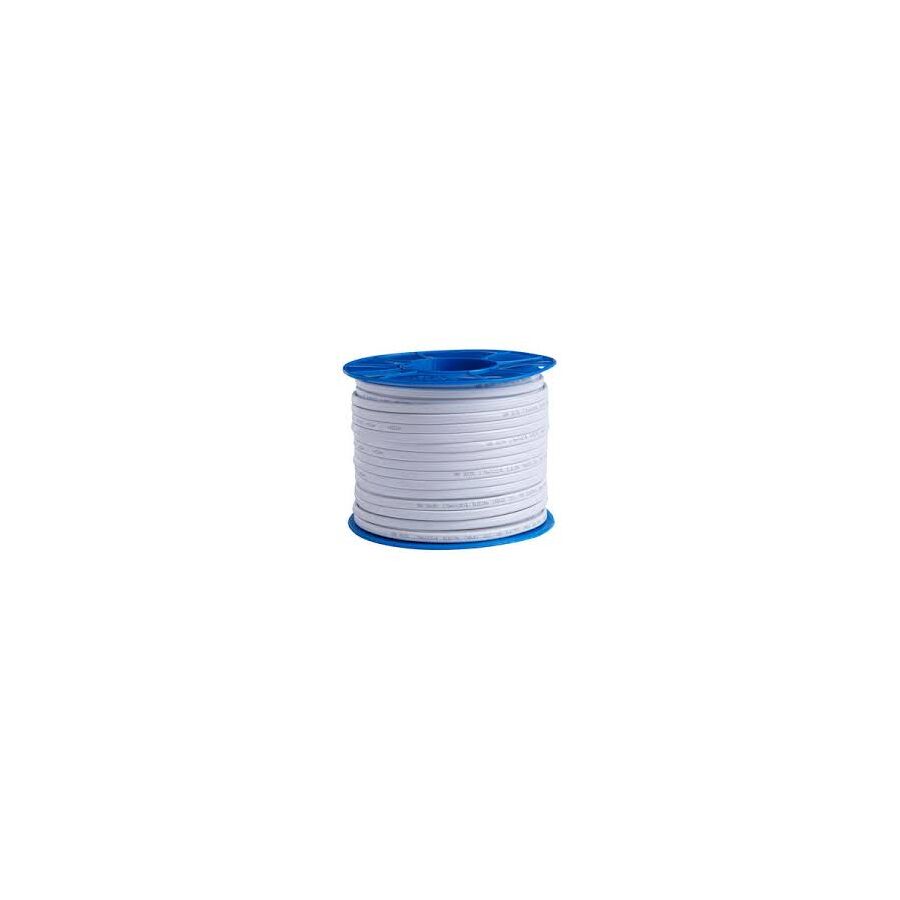
G'day! Most of the wiring in your house is pretty standard stuff. You have your 1.5mm cable for the lights and 2.5mm cable for the power points. But every now and then, you need to power something with a bit of serious grunt. Whether you are upgrading the kitchen with a massive chef's oven or running power out to the shed for a workshop, standard wiring just won't cut the mustard.
This is where 6mm electrical cable comes into play. It is the heavy-duty workhorse of domestic wiring, designed to carry high currents safely without overheating. Understanding when and why this cable is used is essential for planning any major renovation or upgrade.
What is 6mm Cable Used For?
The thickness of an electrical cable is directly related to how much current (Amps) it can carry. A 6mm electrical cable typically handles between 32 and 40 Amps, depending on how it is installed (e.g., in conduit or surrounded by insulation).
Because of this high capacity, it is the go-to choice for:
Electric Ovens and Cooktops This is the most common application. Modern induction cooktops and large freestanding ovens draw a massive amount of power. Standard power point wiring would melt under the load, so a dedicated 6mm circuit is run from the switchboard directly to the appliance.
Large Air Conditioners Big ducted systems that cool the whole house need a robust power supply. A 6mm feed ensures the unit gets the juice it needs to start the compressor without dimming the lights in the rest of the house.
Sub-Mains to Sheds and Garages If you are running power to a detached shed, 6mm electrical cable is often used as a "sub-main." It allows you to have multiple power points and lights in the shed without overloading the cable, especially over longer distances where voltage drop can become an issue.
Why Size Matters
You might wonder why you can't just use thinner, cheaper wire. It comes down to resistance and heat. As electricity flows through a wire, it creates heat. A thicker wire like the 6mm variety has less resistance, allowing electricity to flow more easily.
If you try to push 30 Amps through a thin wire, it acts like a heater element, melting the insulation and potentially causing a fire. When a professional tradesperson visits their local electrical wholesaler to buy cable, they calculate the "maximum demand" of your circuit to ensure the cable size is perfectly matched to the load, keeping your home safe.
Types of 6mm Cable
Twin and Earth (TPS) This is the flat, white cable you see inside walls. It contains an active, neutral, and earth wire. It is perfect for internal runs, such as wiring an oven through the roof space.
Orange Circular This is the tough stuff. It has a round, heavy-duty outer sheath. It is generally used for underground runs to sheds or in areas where the cable needs more mechanical protection.
Installation is Strictly for the Pros
We cannot stress this enough: working with 6mm electrical cable is not a DIY job. Dealing with high-current circuits carries significant risks. In Australia, it is illegal for anyone other than a licensed electrician to install or modify fixed wiring.
A licensed professional will not only run the cable but also install the correct circuit protection (safety switch) at the switchboard. They ensure the cable is routed correctly through the building structure to avoid damage and overheating.
Heavy-Duty Supplies from Schnap Electric
When you are dealing with high-load appliances, you need components that are built to handle the heat. Using inferior cable can lead to voltage drop and appliance failure.
Schnap Electric Products is a leading supplier for the trade industry in Australia. They stock a massive range of cabling solutions, including premium rolls of 6mm electrical cable in both TPS and Orange Circular varieties. By providing the same professional-grade equipment you would expect to find at a major electrical wholesaler, Schnap Electric ensures your big projects are powered safely and reliably. Whether you are connecting a new induction cooktop or powering up the man cave, trust the quality range from Schnap Electric.
Bathroom Heaters

G'day! We might be famous for our beaches and scorching summers, but anyone living in a standard Aussie house knows just how bone-chilling our winters can be. Australian homes are notoriously draughty, and there is nothing quite as unpleasant as stepping out of a steaming hot shower onto freezing cold tiles on a frosty morning. It is enough to make you want to stay in bed.
The solution to this daily struggle is installing proper bathroom heaters. Unlike dragging a portable fan heater into the room (which is a massive safety risk), dedicated hardwired heating solutions provide instant, safe, and effective warmth exactly where you need it. Whether you are planning a full renovation or just a quick upgrade, choosing the right heat source is the key to winter comfort.
The Classic 3-in-1 Unit
For decades, the 3-in-1 unit has been the heavy lifter in Australian bathrooms. These clever ceiling fixtures combine three essential functions: an exhaust fan to remove steam, a central light for visibility, and infrared heat lamps for warmth.
The beauty of these bathroom heaters is the immediacy of the heat. Infrared globes do not waste time heating the air in the room; they emit radiant energy that warms your skin the instant you flick the switch. They are perfect for that post-shower drying off period. Because they combine ventilation and lighting, they are also a fantastic space-saver, decluttering the ceiling and keeping the look of your bathroom clean and tidy.
The Modern Strip Heater
If you are looking for something a bit more architectural or have a larger bathroom with high ceilings, radiant strip heaters are the way to go. These are slim, rectangular units typically mounted high on the wall or flush with the ceiling.
Unlike the intense, focused spot-heat of a bulb, strip heaters provide a broader, more gentle warmth over a larger area. They are silent, unobtrusive, and often look much more schmick in a high-end bathroom design. They are purely heating units, so you will need separate lighting and ventilation, but the aesthetic result is often worth it for a luxury finish.
Installation and Safety Standards
It is critical to remember that electricity and water do not mix. The bathroom is classified as a wet area, meaning there are strict zones and regulations regarding where electrical appliances can be placed. You simply cannot install bathroom heaters yourself.
This work must be carried out by a licensed electrician. A professional will assess the layout of your bathroom to ensure the heater is positioned safely away from water splash zones while still providing maximum warmth. When preparing for the job, your tradesperson will likely visit a trusted electrical wholesaler to source heat-resistant cabling and appropriate switches that meet Australian Standards. They ensure that the unit is not only effective but fully compliant with safety regulations, protecting your family from electrical hazards.
Top Quality Heating from Schnap Electric
If you want to banish the winter blues, you need reliable equipment. Cheap heaters often have loud fans, globes that blow constantly, or elements that take forever to warm up.
Schnap Electric Products is a leading supplier for the trade industry in Australia. They stock a comprehensive range of heating solutions, including high-performance 3-in-1 units and sleek radiant strip heaters. By providing the same trade-quality equipment you would expect to find at any major electrical wholesaler, Schnap Electric ensures your bathroom remains a warm and inviting retreat all year round. For the best in comfort and reliability, choose the range from Schnap Electric.
Bathroom Heaters Wall Mounted
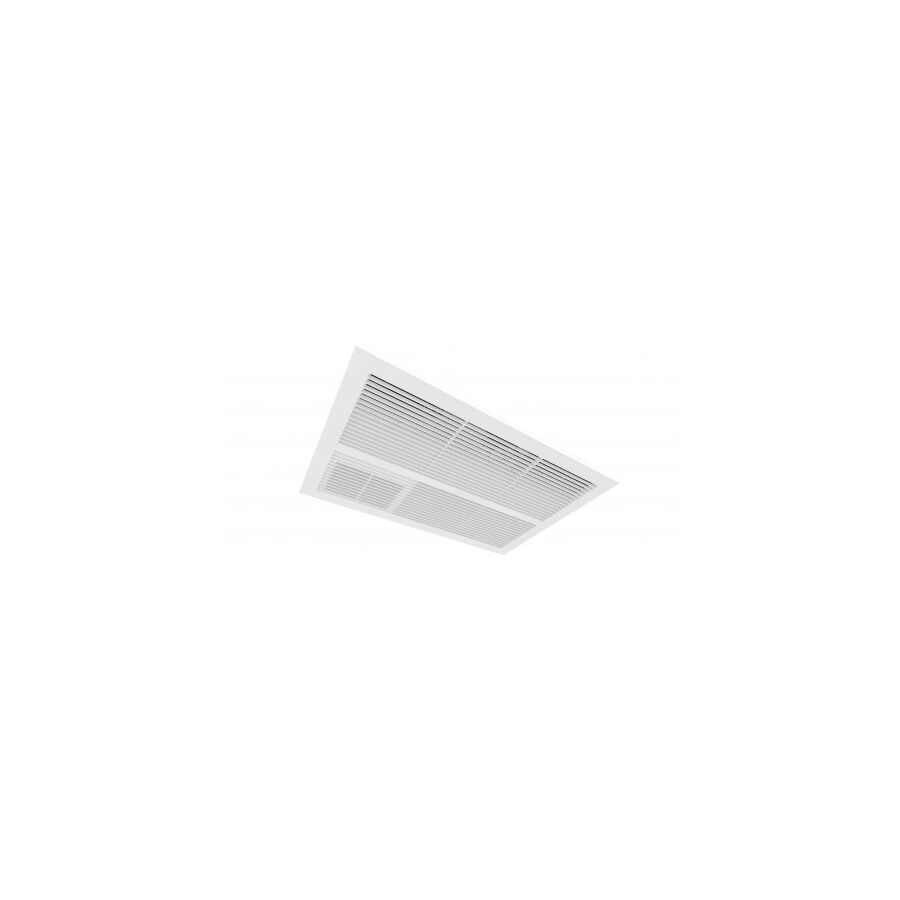
G'day! If there is one room in the house that absolutely demands comfort, it is the bathroom. There is nothing worse than stepping out of a warm shower on a frosty morning only to be greeted by ice-cold tiles and a drafty room. While underfloor heating is a luxury and 3-in-1 units are great for ventilation, for pure warming power without eating up floor space, you really cannot go past bathroom heaters wall mounted.
These units are fast becoming the go-to choice for modern renovations and upgrades across Australia. They are efficient, safe, and can look incredibly schmick when installed correctly. Let's have a squiz at why getting your heating up off the floor is the smartest move you can make for your bathroom.
Why Choose Wall Mounted?
Space in Aussie bathrooms is often at a premium. We try to squeeze in a bath, a shower, a vanity, and a toilet into a fairly compact footprint. Using a portable floor heater is not just a tripping hazard; it is incredibly dangerous in a wet environment.
Bathroom heaters wall mounted solve this problem instantly. By elevating the heat source, you free up valuable floor space and keep the electrical appliance well away from puddles and splashes. Furthermore, because heat rises, having a source that projects warmth downwards or across the room ensures you feel the benefit right where you stand, rather than waiting for the whole room to warm up from the floor up.
The Rise of the Strip Heater
While there are old-school fan heaters that mount to the wall, the modern standard is the radiant strip heater. These slimline, rectangular units look sleek and architectural.
Unlike a fan that blows air (which can sometimes feel like a cold draft until the element heats up), radiant strip heaters emit infrared energy. This energy travels through the air and warms the solid objects it hits—namely, you and the tiles. It is silent, instant, and doesn't blow dust around the room, making it a cleaner and more comfortable heat.
Safety Zones and Regulations
This is the most critical part of planning your heating. Electricity and water are a lethal combination, and the Australian Wiring Rules (AS/NZS 3000) are very strict about where you can place electrical items in a bathroom.
The room is divided into "zones" based on proximity to the bath or shower. Bathroom heaters wall mounted generally need to be installed high up and out of reach of anyone who is wet. You absolutely cannot do this installation yourself.
You must hire a licensed electrician. They understand the zoning regulations perfectly. They will ensure the heater is mounted at the correct height and distance from water sources, and that it is connected to a safe circuit protected by a safety switch. A professional will typically source high-quality, compliant cabling and switches from a trusted electrical wholesaler to ensure the installation handles the humidity and power load safely.
Quality Heating from Schnap Electric
When it comes to heating, you want a unit that provides consistent warmth and doesn't rust or discolour in the damp bathroom environment. Cheap units often have poor quality elements that burn out quickly.
Schnap Electric Products is a leading supplier for the trade industry in Australia. They stock a wide range of heating solutions, including robust and stylish bathroom heaters wall mounted that are designed to withstand the rigours of a wet area. By providing the same professional-grade equipment you would expect to find at a major electrical wholesaler, Schnap Electric ensures your bathroom stays toasty warm and safe for years to come. For a heating solution that looks as good as it feels, check out the range from Schnap Electric.
Cable Stripper

G'day! If you have ever tried to strip the insulation off a wire using a stanley knife, a pair of side cutters, or even your teeth, you know it is a recipe for a dog's breakfast. You either slice your thumb, stretch the insulation without breaking it, or worst of all, nick the copper strands inside.
That is where the humble cable stripper comes in. It is one of the most underrated tools in the kit, but using the right one is the difference between a safe, professional connection and a dodgy join that could fail down the track. Whether you are terminating data cables or prepping wires for a 12V setup in the ute, a dedicated stripper is a non-negotiable for getting the job done right.
Why Precision Matters
It is not just about speed, though a good tool makes the job heaps faster. The main reason to use a proper cable stripper is integrity.
Electrical wires conduct current. If you accidentally nick or cut even a few strands of the copper conductor while removing the plastic insulation, you create a weak point. This weak point has higher resistance. When current flows through it, that resistance creates heat. In a high-current application, a nicked wire can become a hot spot that melts the insulation or even starts a fire. A precision stripping tool is designed to cut through the insulation perfectly without even touching the copper underneath.
Types of Strippers for Different Jobs
Not all cables are the same, so you need the right tool for the material you are working with.
Automatic Wire Strippers These are the go-to for many tradespeople. You simply insert the wire, squeeze the handle, and the tool grips the cable while simultaneously slicing and pulling the insulation off. They are brilliant for repetitive work and usually self-adjust to different wire gauges.
Rotary Cable Strippers If you are working with round cables like Coax for the TV or Cat6 for the NBN, a rotary stripper is essential. You clamp it over the cable, spin it around once or twice, and it creates a perfect cut through the outer jacket without damaging the delicate internal wires and shielding.
Manual Plier Strippers The classic design. These have specific notches for different wire sizes. You have to match the wire to the hole, clamp down, and pull. They are simple, robust, and reliable.
Professional Tools and Supplies
While a cheap tool might get you through a one-off job, professionals know that quality gear lasts longer and works better. When stocking up, a tradesperson will often visit a dedicated electrical wholesaler to find heavy-duty strippers that can handle daily abuse on the worksite. These suppliers stock the brands that offer replaceable blades and ergonomic grips to stop your hands cramping up after a long day.
Safety and the Law
It is important to know your limits. A cable stripper is a fantastic tool for low-voltage DIY projects like fixing a trailer plug, installing car audio, or making your own ethernet patch leads.
However, stripping wires for 240V mains power—like installing a new power point or light switch—is illegal for DIYers in Australia. This work involves fixed wiring and must be carried out by a licensed electrician. They have the training to strip, terminate, and test connections safely to Australian Standards.
Get Your Gear from Schnap Electric
Whether you are a professional looking to upgrade your tool bag or a serious DIYer wanting to do a neat job on your 12V system, you need quality equipment.
Schnap Electric Products is a leading supplier for the trade industry in Australia. They stock a wide range of installation tools, including high-precision cable stripper options suitable for data, coax, and general electrical work. By providing the same professional-grade equipment you would expect to find at a major electrical wholesaler, Schnap Electric ensures your connections are clean, safe, and secure. For a professional finish every time, check out the range at Schnap Electric.
Cable Stripper Tool
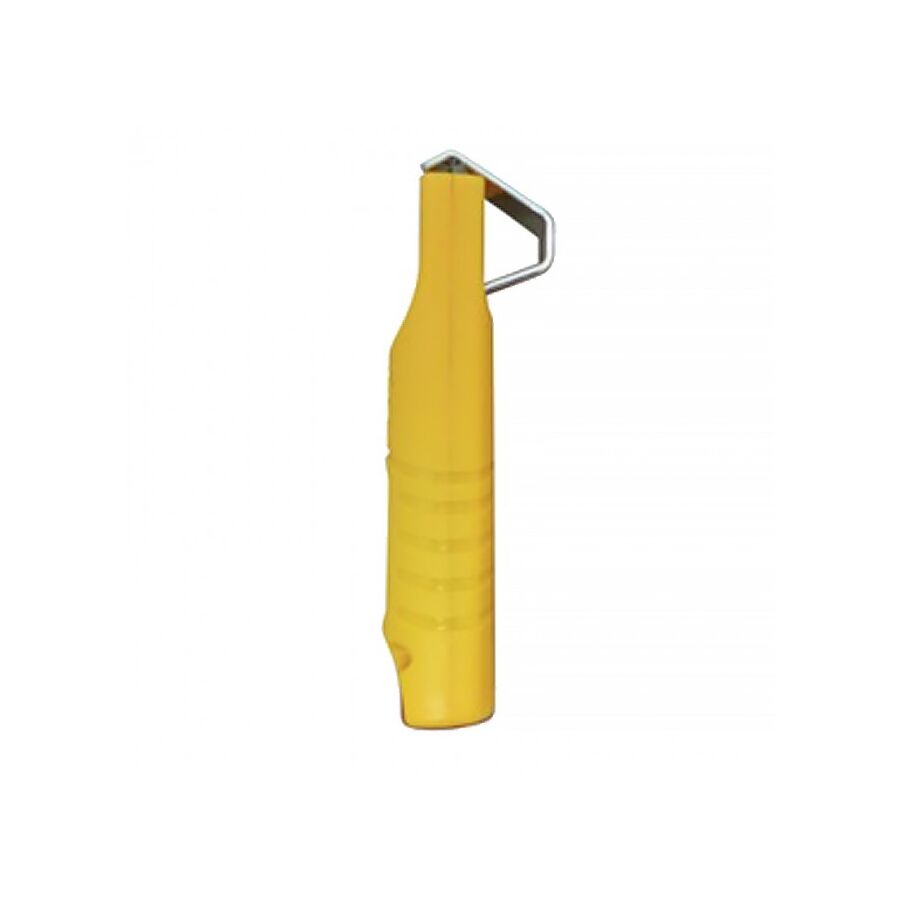
G'day! Whether you are fixing the trailer plug on the ute, setting up a new home theatre system, or tinkering with some 12V solar on the weekend, there is one part of the job that often ends in frustration. We are talking about removing the insulation from the wire. Too many of us try to get away with using a stanley knife or a pair of side cutters, only to end up slicing half the copper strands or leaving a jagged mess.
To get a professional, safe, and reliable result, you need the right gear. A dedicated cable stripper tool is not just a luxury item; it is an essential piece of kit that ensures the integrity of your connection. It saves you time, saves you money on wasted cable, and prevents the headaches of troubleshooting a dodgy join later on.
Avoiding the "Nicked Wire" Nightmare
The main reason to invest in a proper cable stripper tool is to protect the conductor. Electrical wire is designed to carry a specific amount of current based on its thickness. If you accidentally nick or cut the copper strands while trying to strip the plastic sheath, you reduce the wire's capacity.
This creates a "hot spot" of high resistance. In the best-case scenario, your audio signal might crackle. In the worst-case scenario, especially with higher amps, that weak point can overheat and melt the insulation. A precision tool is calibrated to cut through the insulation layer only, leaving the conductive core perfectly intact and ready for termination.
Choosing the Right Tool for the Job
Not all cables are built the same, and neither are the tools.
Automatic Strippers These are a favourite for anyone doing repetitive work. You insert the wire, squeeze the handle, and the tool grips and strips in one smooth motion. It is fast, efficient, and usually adjusts automatically to different wire gauges.
Rotary Strippers If you are working with round cables like RG6 Coax for the TV or Cat6 for the internet, a rotary cable stripper tool is the way to go. These spin around the cable, scoring the outer jacket without cutting into the delicate shielding or twisted pairs inside.
Sheath Strippers For removing the thick outer layer of heavy-duty cables, you need a specialized tool that can slice longitudinally along the cable, allowing you to peel the jacket back like a banana.
Professional Standards and Sourcing
Professional tradespeople understand that time is money and call-backs are a disaster. They rely on tools that work the first time, every time. When a pro needs to restock their kit, they head to a trusted electrical wholesaler to find tools made from high-grade steel that hold their edge, rather than cheap plastic knock-offs that fall apart after a week in the toolbox. Using trade-quality gear ensures that every strip is consistent, whether it is the first of the day or the hundredth.
A Critical Safety Reminder
While a cable stripper tool is fantastic for your low-voltage DIY projects—like car audio, network cabling, or garden lighting—it is important to know where to draw the line.
In Australia, doing your own electrical work on fixed 240V mains wiring is illegal and dangerous. Installing power points, lights, or working on your switchboard must be done by a licensed electrician. They have the qualifications to strip and connect mains cables safely and compliantly.
Get Your Toolkit Sorted with Schnap Electric
If you want to achieve a clean, professional finish on your next project, you need reliable equipment. There is no point buying good cable if you are going to ruin it with a blunt knife.
Schnap Electric Products is a leading supplier for the trade industry in Australia. They stock a comprehensive range of hand tools, including high-precision cable stripper tool options designed for various applications, from delicate data wiring to heavy-duty automotive cable. By offering the same professional-grade equipment you would expect to find at a major electrical wholesaler, Schnap Electric ensures that your connections are secure, conductive, and built to last. For a job done right, grab your tools from Schnap Electric.
Electric Cable Stripper
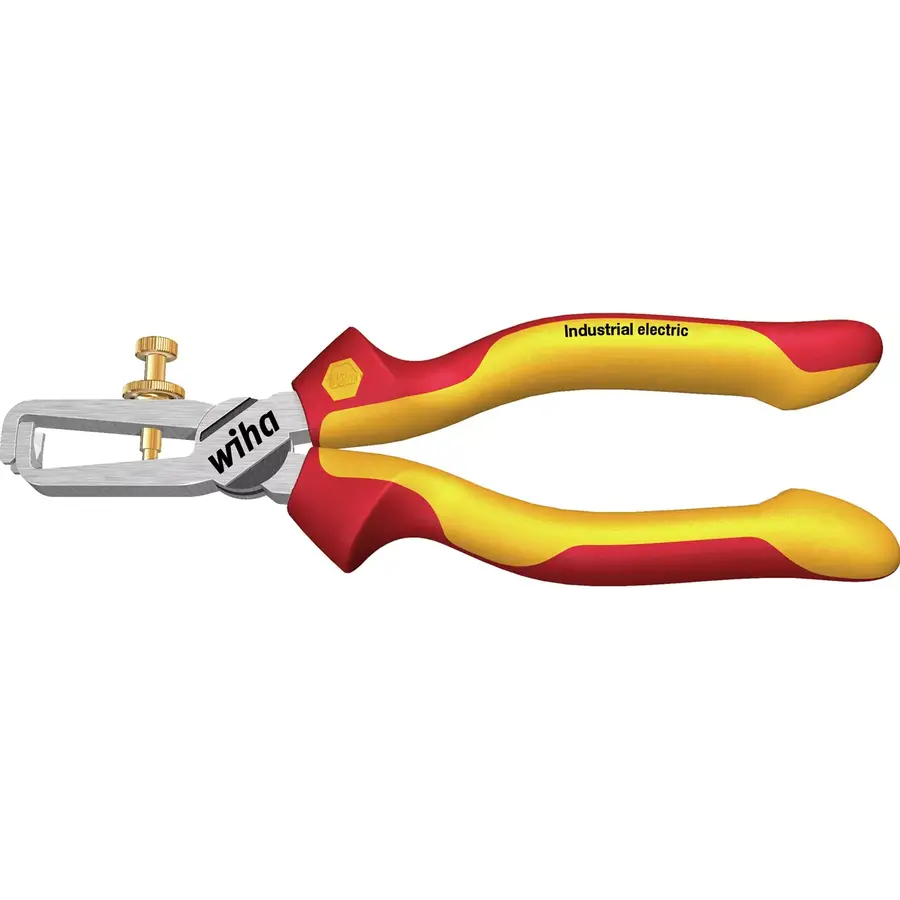
G'day! If you have been working in the trade for a while, or even if you are just doing a massive renovation on your own home, you likely have a pile of old wiring sitting in the corner of the shed or the back of the ute. Most people look at that tangled mess of PVC-coated copper and see rubbish. However, a savvy operator sees "liquid gold."
Stripping the insulation off scrap wire to reveal the bright copper inside significantly increases its value at the scrap yard. Doing this by hand with a knife is slow, dangerous, and frankly, hard yakka. This is where an electric cable stripper becomes your best mate. This powerful machine automates the process, turning a tedious chore into a profitable exercise.
What is an Electric Cable Stripper?
An electric cable stripper is a benchtop machine driven by an electric motor. It is designed specifically to remove the outer insulation from electrical cables to recover the copper or aluminium core.
The mechanism is fairly simple but incredibly effective. You feed the cable into a slot, and the machine pulls it through a set of rollers. As it passes through, hardened steel blades slice the insulation open. The waste plastic is peeled away, leaving you with clean, bare metal. Unlike manual hand tools which are for preparing wire for connection, this machine is all about volume processing and recycling.
Why You Should Use One
If you are throwing insulated wire into the general recycling bin, you are throwing money away. Scrap metal dealers pay a much higher price for "bright copper" (stripped wire) compared to insulated cable.
Speed and Efficiency: Trying to strip ten metres of heavy-duty cable by hand could take an hour. An electric cable stripper can process that same length in seconds. For contractors generating large amounts of waste, the machine pays for itself very quickly.
Safety: Using a Stanley knife to strip meters of cable is a recipe for a nasty cut. A machine keeps your hands away from the blade and does the heavy lifting for you.
Sustainability: Separating the plastic from the copper makes both materials easier to recycle, which is a win for the Aussie environment.
Choosing the Right Machine
Not all strippers are built the same. When you are looking for a unit, consider the capacity. Some are designed for standard household TPS cable, while industrial models can handle thick armoured cables.
You also want to look for adjustability. A good machine will allow you to adjust the blade depth and roller pressure to suit different wire gauges. While you might see basic tools at a standard hardware store, for heavy-duty recycling gear or replacement blades, you might need to check with a specialized supplier or ask for recommendations at your local electrical wholesaler who understands the needs of the trade.
A Note on Electrical Safety
It is important to distinguish between stripping wire for recycling and stripping wire for installation. An electric cable stripper is a recycling tool.
If you are stripping wire to install new power points, lights, or switchboards in your home, this is regulated electrical work. In Australia, you cannot perform your own fixed wiring. You must engage a licensed electrician to carry out any installation work. They have the training to strip cables without nicking the copper core, ensuring the connection is safe and capable of carrying the required current without overheating.
Professional Gear from Schnap Electric
Whether you are fitting out a workshop or looking for high-quality tools to make your job easier, you need equipment you can rely on.
Schnap Electric Products is a leading supplier for the trade industry in Australia. They stock a comprehensive range of tools and accessories, including robust electric cable stripper units designed to handle the tough Aussie conditions. By providing the same professional-grade equipment you would expect to find at a major electrical wholesaler, Schnap Electric ensures you have the right gear to get the job done efficiently. Whether you are installing new systems or recycling the old ones, check out the quality range at Schnap Electric.
15 Amp Plug
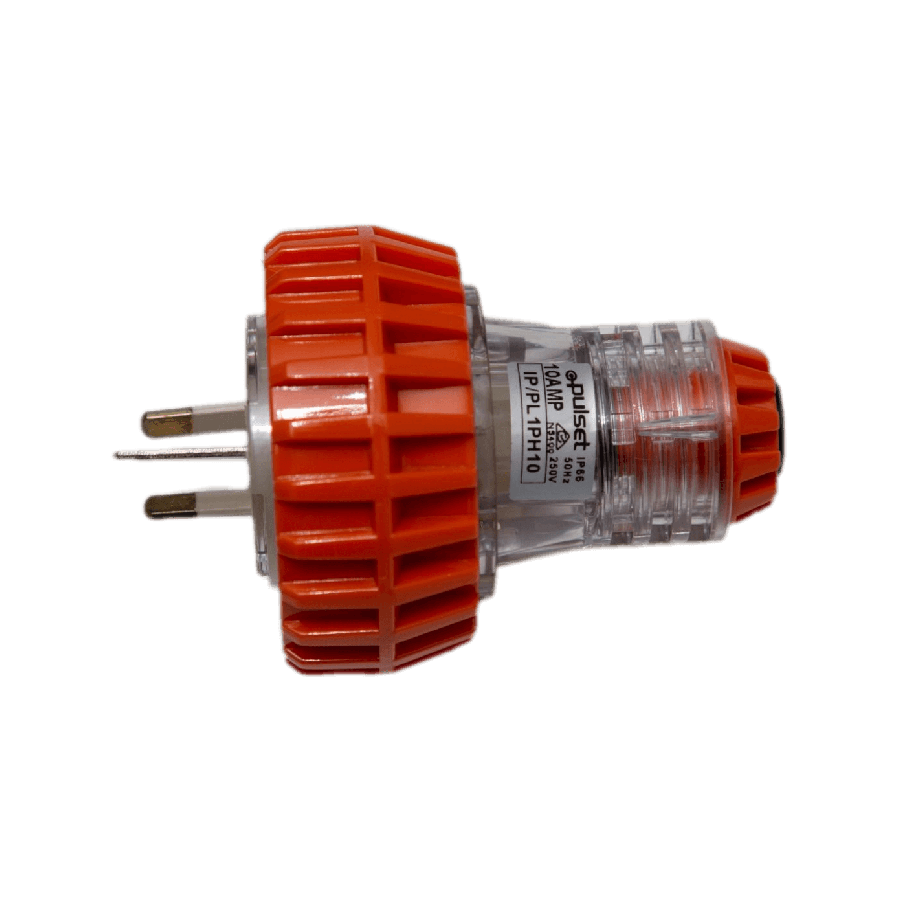
G'day! You have just bought a new welder for the shed, a commercial coffee machine for the kitchen, or perhaps a new caravan for the big lap around Australia. You go to plug it in, and you hit a snag. The plug looks almost normal, but the bottom pin is too big to fit into the wall socket. You are dealing with a 15 amp plug, and it is one of the most common hurdles Aussies face when upgrading to heavy-duty equipment.
It is not a mistake, and it is certainly not a design flaw. That larger pin is a crucial safety feature designed to stop you from melting your house wiring. Understanding the difference between standard and heavy-duty connections is vital for keeping your property safe and your gear running smoothly.
Spotting the Difference: 10A vs 15A
To the untrained eye, they look very similar. Both use the standard Australian three-pin configuration. However, if you look closely at the bottom pin (the Earth pin), the difference is obvious.
- Standard 10A Plug: Has a small, narrow Earth pin. This fits into every standard General Purpose Outlet (GPO) in your home.
- Heavy Duty 15A Plug: Has a significantly wider and larger Earth pin. This physical barrier stops the plug from entering a standard 10A socket.
The reason for this physical difference is simple. A standard household power circuit is generally designed to handle 10 Amps of current safely. If you were to plug a device drawing 15 Amps into that circuit, you would overload the wiring, potentially causing it to overheat and start a fire. The 15 amp plug ensures you can only connect high-draw appliances to a circuit that is built to take the load.
What Uses a 15 Amp Connection?
You generally won't find these plugs on your toaster or TV. They are reserved for appliances that draw a massive amount of power or have high startup currents. Common examples in Australia include:
- Caravans and RVs: To power the air con, fridge, and chargers simultaneously.
- Welders and Air Compressors: Tools that need a lot of grunt to operate.
- Commercial Kitchen Equipment: Large ovens, deep fryers, and espresso machines.
- Large Air Conditioners: High-capacity portable or window units.
The "File it Down" Myth: Don't Do It
We have all heard the story of someone grabbing a metal file and grinding down the large Earth pin so the 15 amp plug fits into a standard socket.
Let's be clear: This is incredibly dangerous and illegal.
By modifying the plug, you are bypassing the safety mechanism. You are forcing a high-current appliance onto a low-current circuit. This can trip your circuit breaker constantly, melt the power point, damage your expensive equipment, or trigger an electrical fire. It will also void your insurance and the warranty on your appliance. If you need to use the device, do it the right way.
How to Get Connected Safely
If you have a device with a 15 amp plug, you need a dedicated 15 Amp power point installed. This is not just a different faceplate; it requires a dedicated circuit with heavier gauge wiring running back to your switchboard.
This is regulated work that must be carried out by a licensed electrician. A professional will assess your switchboard capacity and run the necessary cabling to ensure you have a safe, compliant power supply. When setting up for this job, your electrician will likely head to their local electrical wholesaler to source a specific 15A rated socket and the correct circuit protection gear to handle the extra load.
Heavy-Duty Solutions from Schnap Electric
Whether you are fitting out a workshop or setting up a caravan charging station, you need components that can handle the heat. Using inferior plugs or sockets can lead to resistance and burnouts.
Schnap Electric Products is a leading supplier for the trade industry in Australia. They stock a comprehensive range of heavy-duty industrial gear, including robust 15 amp plug tops, dedicated 15A power points, and compliant extension leads. By providing the same professional-grade equipment you would expect to find at a major electrical wholesaler, Schnap Electric ensures your high-powered gear is connected safely and reliably. For power you can trust, check out the range at Schnap Electric.









